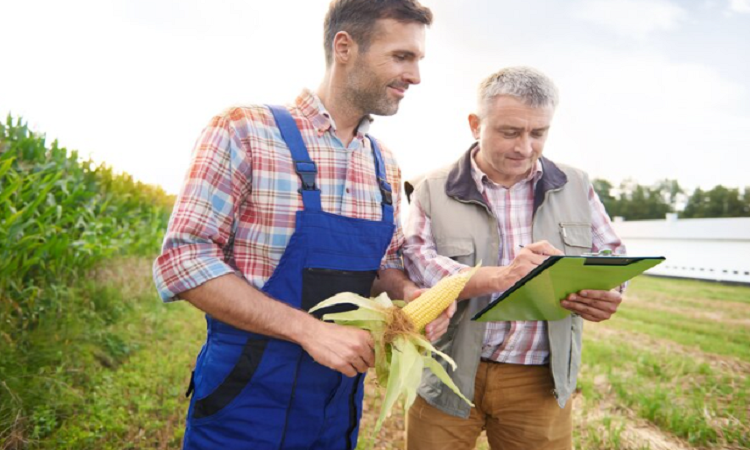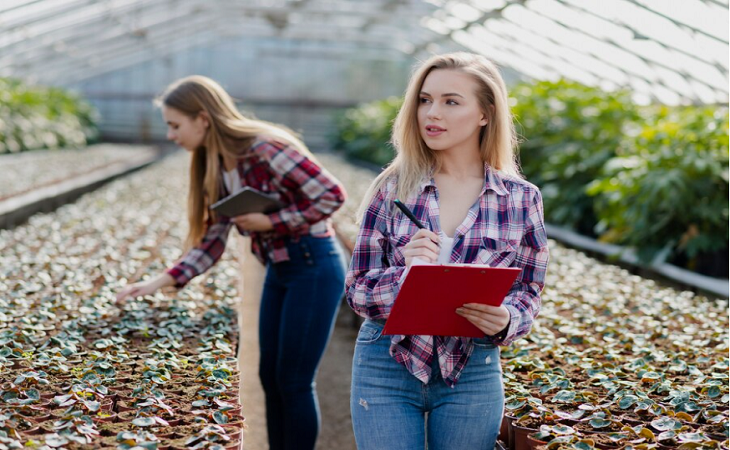The impact of climate change on agriculture and rural development, and the adaptation strategies
Climate change is no laughing matter, but it’s important to talk about it with a little bit of humor to break through the noise and get people engaged. So let’s talk about climate change and its impact on agriculture and rural development.
As the Earth’s temperature continues to rise, the effects of climate change are becoming increasingly clear. One of the areas that is being hit the hardest is agriculture and rural development. Farmers around the world are facing unpredictable weather patterns, crop failures, and rising costs of inputs. Rural communities are struggling to adapt to changing conditions and maintain their livelihoods. But there is hope! In this article, we will explore the impact of climate change on agriculture and rural development and discuss some of the adaptation strategies that are being used to address these challenges.
We will start by examining the effects of climate change on crop yields, soil fertility, and water availability. We will also discuss the impact of climate change on rural development, including poverty, food insecurity, and lack of infrastructure. From there, we will explore various adaptation strategies, including crop diversification, conservation agriculture, and sustainable tourism. We will also look at policy and institutional responses that are needed to support adaptation. By the end of this article, you will have a better understanding of the challenges and opportunities facing agriculture and rural development in the face of climate change, and some practical solutions that can help us to adapt and thrive.
The Impact of Climate Change on Agriculture
The effects of climate change on agriculture are profound and far-reaching. Changing weather patterns, rising temperatures, and extreme weather events are already impacting crop yields, soil fertility, and water availability. In many regions, farmers are struggling to adapt to these changes, and the consequences for rural communities can be devastating.
According to the United Nations, climate change could reduce crop yields by up to 25% by 2050. In some regions, such as sub-Saharan Africa, crop yields could decline by up to 50% due to rising temperatures and water scarcity. Soil fertility is also at risk, as higher temperatures and changes in rainfall patterns can lead to increased soil erosion, nutrient depletion, and decreased productivity. Water availability is another major concern, as droughts and changing precipitation patterns can lead to water scarcity, which can have serious economic and social consequences for farmers and rural communities. Ultimately, the impact of climate change on agriculture is not just an environmental issue, but an economic and social one as well, with far-reaching implications for food security, poverty, and livelihoods in rural areas.
The Impact of Climate Change on Rural Development
Climate change is exacerbating existing development challenges in rural areas, including poverty, food insecurity, and lack of infrastructure. Rising temperatures, changes in rainfall patterns, and extreme weather events are affecting agricultural production, making it harder for rural communities to access food and generate income. Additionally, climate change is affecting other sectors important for rural development, such as tourism and forestry. For example, changing weather patterns can make it harder for communities to rely on ecotourism, while increased forest fires can threaten the livelihoods of those who depend on forestry for their income. Despite these challenges, many communities are finding ways to adapt to these changes, such as through diversification of livelihoods, water conservation, and building resilience through community-led initiatives.
Adaptation Strategies for Agriculture
As climate change continues to impact agriculture, farmers must adapt to mitigate its effects. There are various adaptation strategies that farmers can use, including crop diversification, conservation agriculture, and improved irrigation techniques. Crop diversification involves growing multiple crops to reduce the risks of climate-related losses. Conservation agriculture involves reducing tillage, maintaining soil cover, and rotating crops to improve soil health and water retention. Improved irrigation techniques, such as drip irrigation, can reduce water use and improve crop yields. Each strategy has its own potential benefits and challenges, and the most effective adaptation strategies will depend on local conditions. Successful examples of adaptation strategies can be seen in different regions, such as the adoption of drought-tolerant crops in sub-Saharan Africa or the use of agroforestry techniques in Latin America.
Adaptation Strategies for Rural Development
To promote sustainable rural development in the face of climate change, different adaptation strategies can be implemented. Renewable energy can be utilized to reduce greenhouse gas emissions and provide a reliable energy source. Sustainable tourism can promote local economies and environmental conservation. Climate-smart infrastructure can help reduce the risks of extreme weather events and promote resilience in communities. Each strategy has its own potential benefits and challenges, and their effectiveness depends on the local context. Successful examples of adaptation strategies can be seen in different regions, such as the implementation of community-owned wind farms in rural Scotland or the development of eco-tourism in Costa Rica. These strategies not only promote sustainable development but also contribute to the resilience of communities facing the challenges of climate change.
Policy and Institutional Responses
Policy and institutions play a crucial role in promoting climate-resilient agriculture and rural development. Effective policies and institutional arrangements are needed to support adaptation efforts, such as climate-smart agriculture policies, which promote sustainable and resilient agricultural practices. Institutional arrangements for managing climate risks are also important, such as early warning systems for extreme weather events and insurance schemes for farmers. Financing mechanisms for adaptation, such as the Green Climate Fund, can provide much-needed financial support for adaptation efforts. Successful examples of policy and institutional responses can be seen in different regions, such as the implementation of the Climate Smart Agriculture program in Kenya, which promotes sustainable agriculture practices and improved resilience to climate change, and the establishment of the National Disaster Risk Management Fund in Bangladesh, which supports disaster risk reduction and management efforts.
Conclusion
In conclusion, climate change is having significant impacts on agriculture and rural development, exacerbating existing development challenges such as poverty, food insecurity, and lack of infrastructure. The effects of climate change on crop yields, soil fertility, and water availability are already being felt in different regions, with economic and social consequences for farmers and rural communities.
Adaptation strategies, both for agriculture and rural development, are crucial to mitigate the impacts of climate change and promote sustainable development. Farmers can implement different adaptation strategies, such as crop diversification, conservation agriculture, and improved irrigation techniques, while rural communities can promote sustainable tourism, renewable energy, and climate-smart infrastructure.
Policy and institutional responses are also needed to support adaptation efforts, such as climate-smart agriculture policies, institutional arrangements for managing climate risks, and financing mechanisms for adaptation. Successful examples of policy and institutional responses can be seen in different regions.
It is crucial to take action to adapt to climate change in order to ensure food security and sustainable development in rural areas. Failure to act could result in irreversible damage to agriculture and rural communities, leading to increased poverty and food insecurity. It is therefore important for governments, organizations, and communities to work together to implement effective adaptation strategies and policies that promote sustainable development and resilience in the face of climate change.
Read More You May Like:














Post Comment